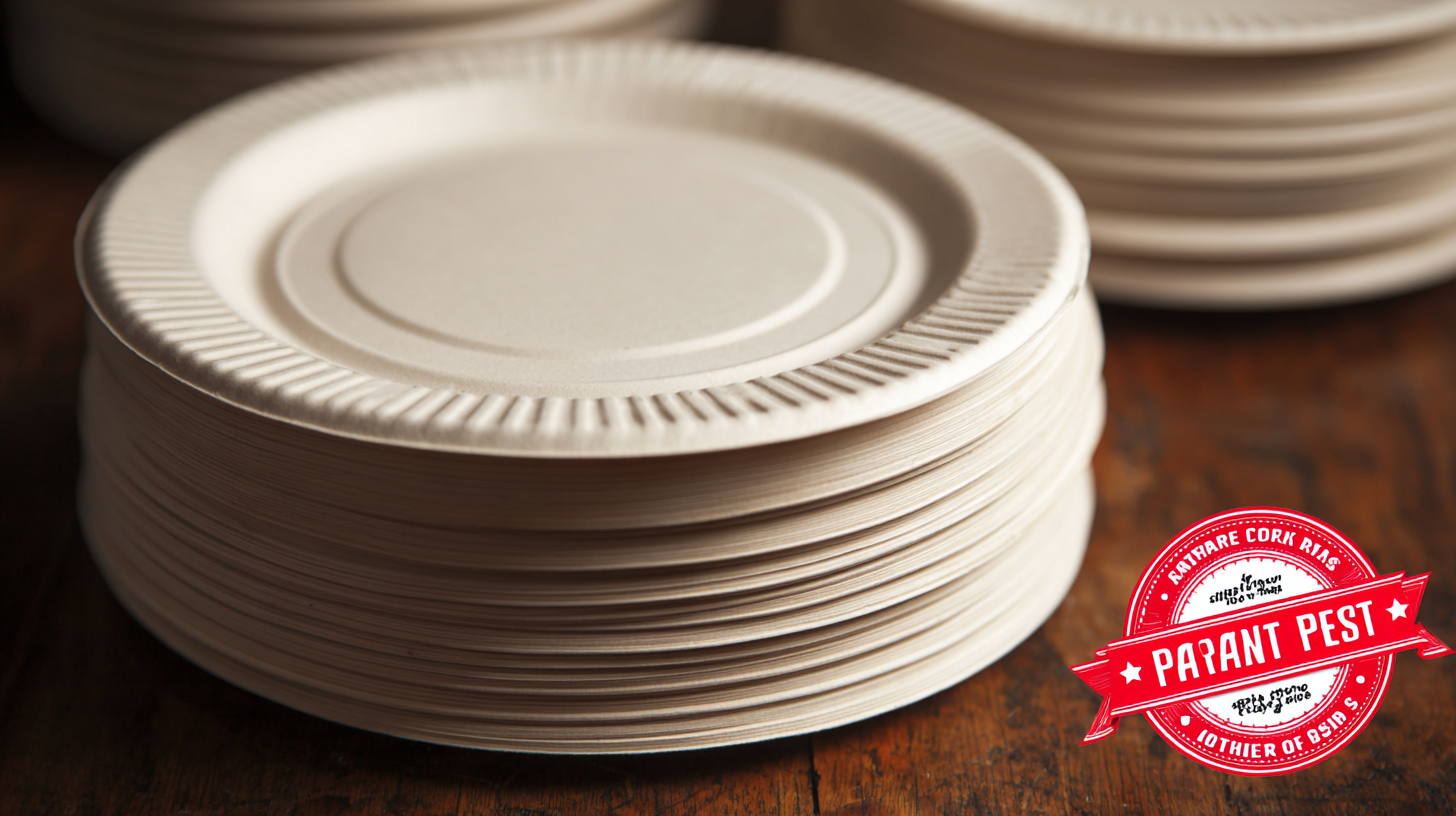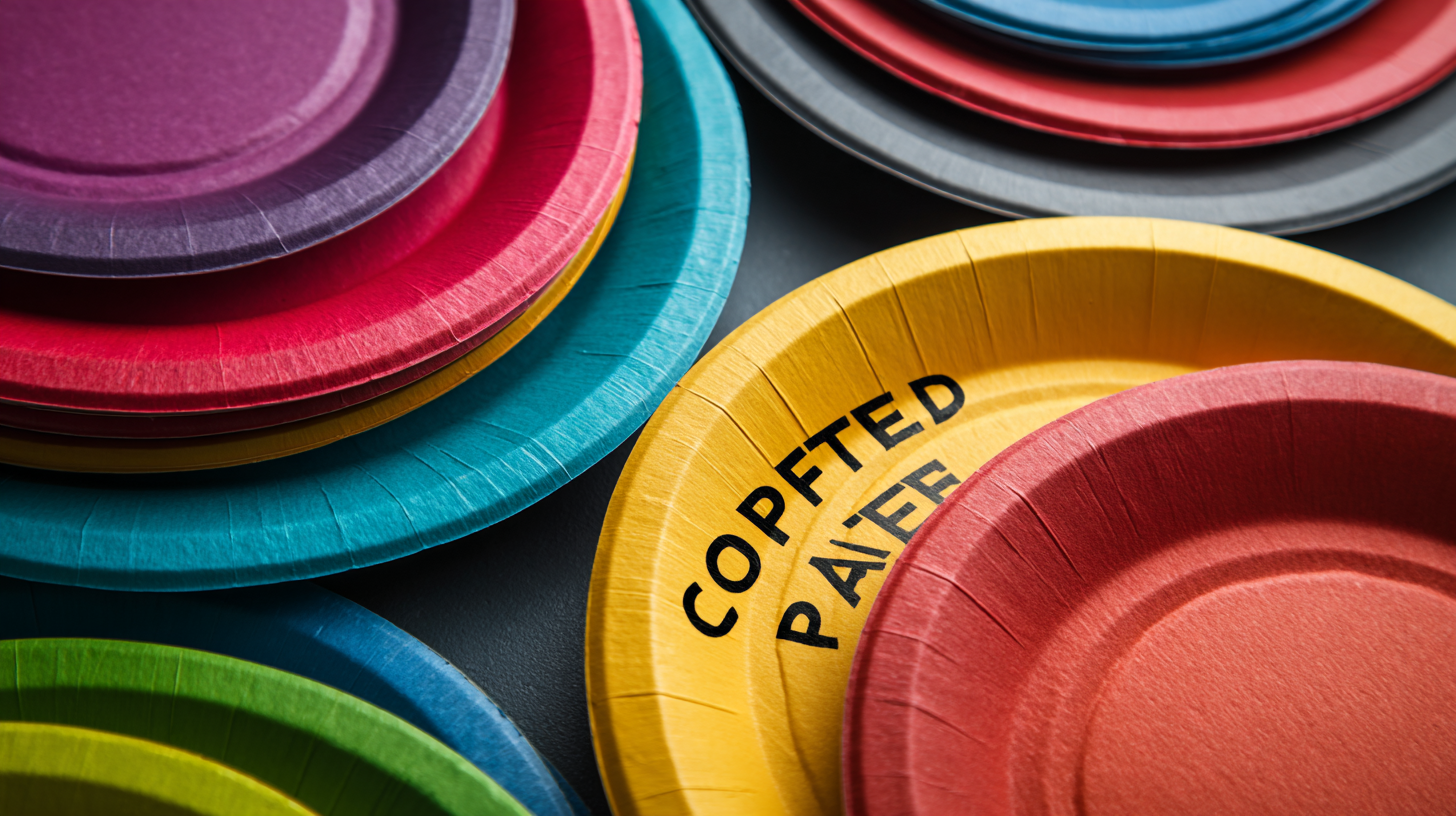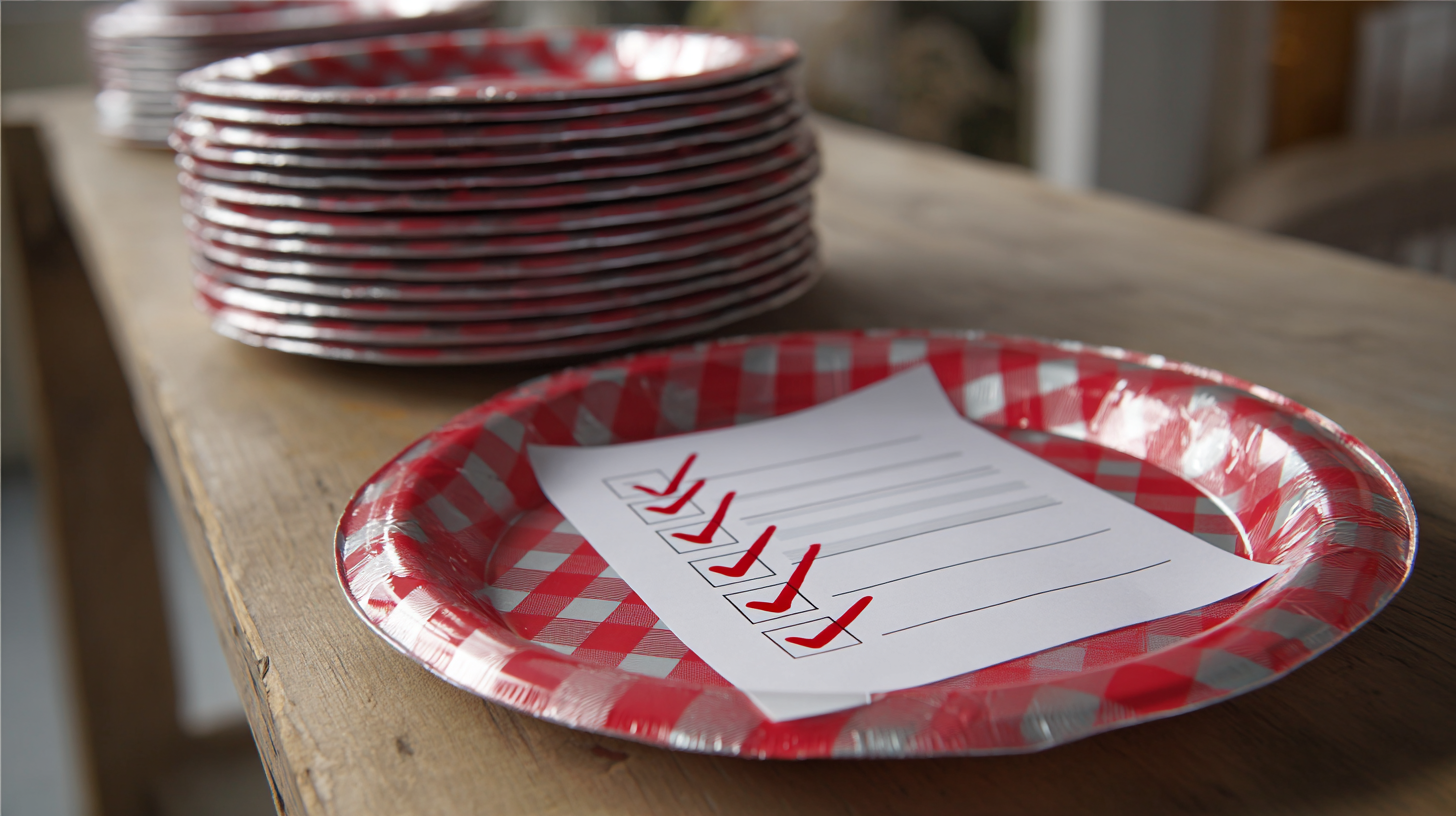Leave Your Message
As the demand for eco-friendly and disposable food service options continues to rise, the use of Coated Paper Plates has become increasingly prevalent across various industries. According to Grand View Research, the global disposable plates market is projected to reach USD 12.5 billion by 2025, driven by factors such as convenience, sustainability, and a growing preference for single-use products in catering and food service.

Chinese manufacturers have established themselves as leaders in this space, leveraging advanced technology and efficient production processes to meet both domestic and international demands. With various coatings available, including compostable and biodegradable options, selecting the right Coated Paper Plates can significantly enhance operational efficiency while aligning with sustainability goals.
This article presents an ultimate checklist to guide businesses in choosing the best Coated Paper Plates tailored to their specific needs, ensuring optimal performance and value.
Coated paper plates have gained significant traction in the food service industry, not just for their practicality but also for their sustainable attributes. According to the Paper and Paperboard Packaging Environmental Council (PPEC), over 80% of Americans prefer packaging that is environmentally friendly. This preference extends to food service items, as businesses strive to align their practices with consumer demands for sustainability. Coated paper plates are often made from renewable resources and can be compostable, reducing the overall environmental impact compared to traditional plastic or Styrofoam options.

When selecting the best coated paper plates for your business, understanding the key material properties is essential, especially when comparing them to plastic and foam alternatives. Coated paper plates are often praised for their biodegradable nature and aesthetic appeal, making them a sustainable choice for environmentally conscious businesses. Unlike plastic plates, which can take hundreds of years to decompose, coated paper plates break down more easily, reducing landfill impact. Additionally, they offer an attractive presentation for food service, appealing to customers who prioritize sustainability.
On the other hand, while foam plates provide excellent insulation and sturdiness, they lack the eco-friendly attributes of coated paper. Foam can also contribute to pollution, as it’s not biodegradable. However, if durability and moisture resistance are a priority, coated paper plates may not perform as well in certain situations compared to foam options. Therefore, weighing the pros and cons of these materials—biodegradability versus durability—will help businesses make informed decisions that align with their operational needs and environmental responsibilities.
As businesses continue to seek sustainable solutions, the coated paper plate market is projected to experience significant growth by 2025. Market research indicates a growing trend towards eco-friendly alternatives, reflecting consumers’ heightened awareness of environmental issues. The increasing demand for disposable tableware that combines convenience with sustainability is propelling the coated paper plate industry forward, making it a viable option for food service establishments looking to minimize their ecological footprint.
Projections show a robust expansion in the coated paper plate sector, driven by factors such as the rise in organized retail and the growing preference for takeout and delivery services. Companies that invest in high-quality coated paper plates will not only meet the rising consumer demand but also align their offerings with sustainable practices. The shifting landscape presents opportunities for businesses to optimize their product selections by focusing on durability, compostability, and overall performance, ensuring that they cater effectively to both environmental standards and customer preferences as we move towards a more eco-conscious market.
When it comes to evaluating the cost-effectiveness of coated paper plates for your business, it's crucial to consider how these products can impact your bottom line. Coated paper plates offer better resistance to moisture and grease, which can decrease the likelihood of product waste due to leakage. This means less money spent on replacing damaged goods and more satisfied customers enjoying their meals without any mess.
Tips for maximizing cost-effectiveness include sourcing plates in bulk. Bulk purchasing can lead to significant savings, as many suppliers offer discounts for larger orders. Additionally, ensure that you assess your business’s specific needs; investing in high-quality plates that align with your meal offerings can enhance customer experience and reduce the risk of complaints, ultimately supporting long-term profitability.
Another tip is to evaluate the environmental impact of your coated paper plates. While initial costs may be higher for eco-friendly options, they can lead to savings in waste disposal and appeal to the growing market of environmentally-conscious consumers. Offering sustainable products not only strengthens your brand image but can also attract more clients, contributing positively to your financial growth.
 When selecting coated paper plates for your business, navigating the landscape of food safety standards is crucial. Regulatory compliance ensures not only the safety of your food products but also the integrity of your brand. Different regions have varying guidelines surrounding the materials used in food service items, so it is essential to stay informed about local and national regulations. This might include understanding the differences between biodegradable and traditional coatings, and their implications for disposal and recyclability.
When selecting coated paper plates for your business, navigating the landscape of food safety standards is crucial. Regulatory compliance ensures not only the safety of your food products but also the integrity of your brand. Different regions have varying guidelines surrounding the materials used in food service items, so it is essential to stay informed about local and national regulations. This might include understanding the differences between biodegradable and traditional coatings, and their implications for disposal and recyclability.
Tip: Always verify that your coated paper plates meet the FDA standards for food contact substances. Look for certifications from recognized organizations that ensure the plates are free from harmful chemicals and suitable for use with hot and cold foods.
Additionally, consider the source of your coated paper plates. Sourcing from reputable suppliers who are transparent about their materials and manufacturing processes can make a significant difference in meeting compliance. It’s advisable to request documentation that outlines adherence to food safety regulations and environmental conditions.
Tip: Establish a strong relationship with your suppliers. Regular communication can help you stay updated on any changes in compliance requirements or new product offerings that may enhance the safety and sustainability of your food service operations.
